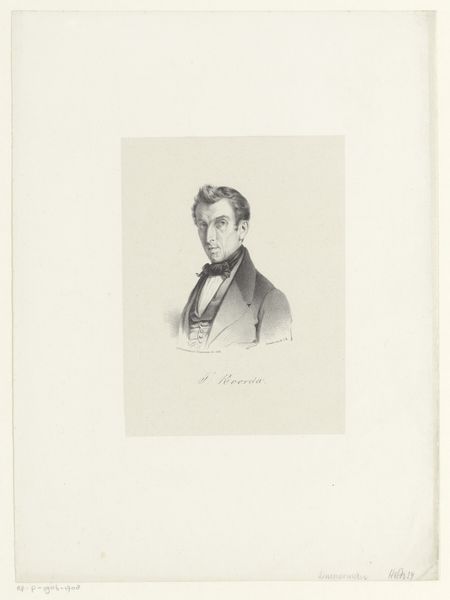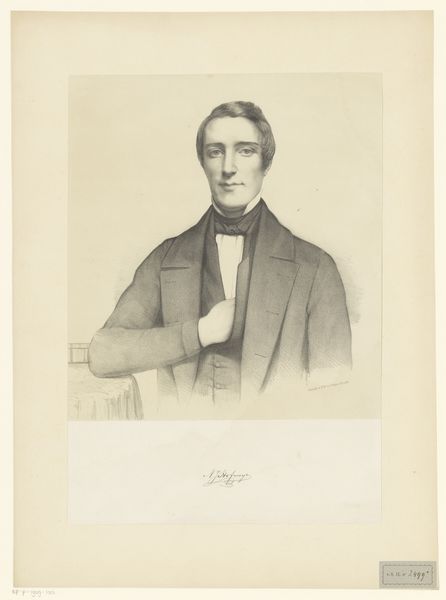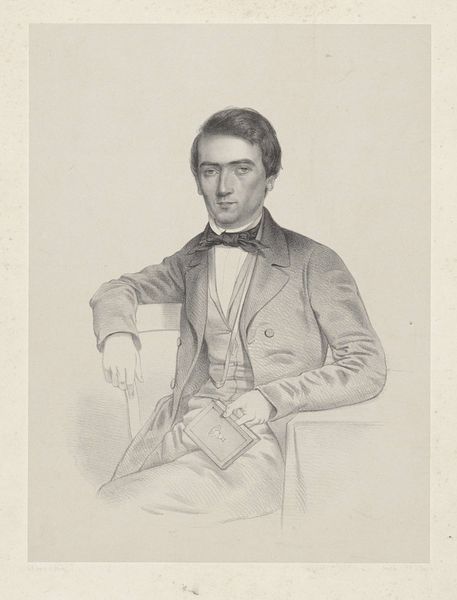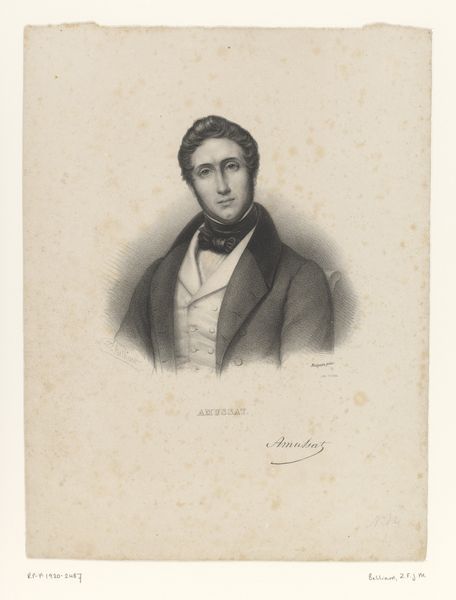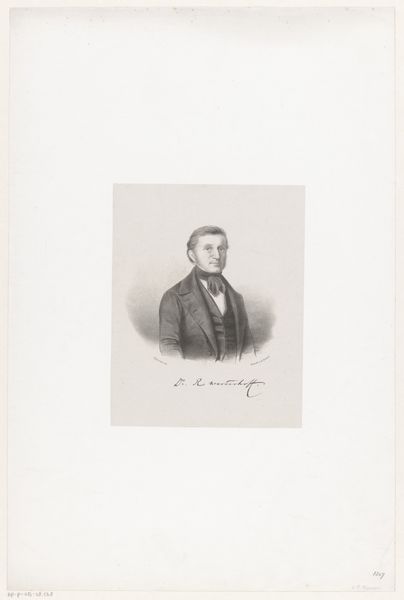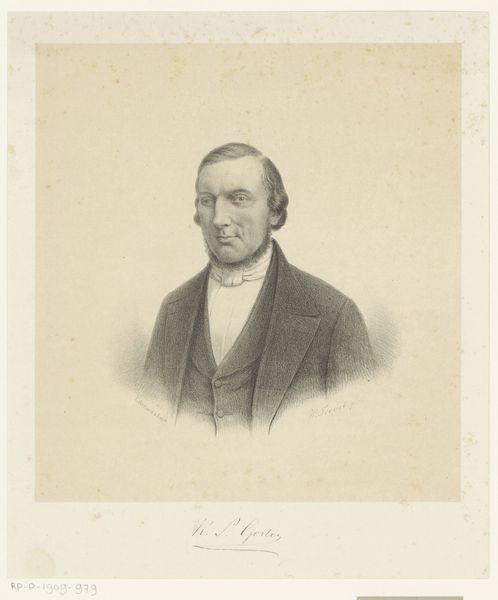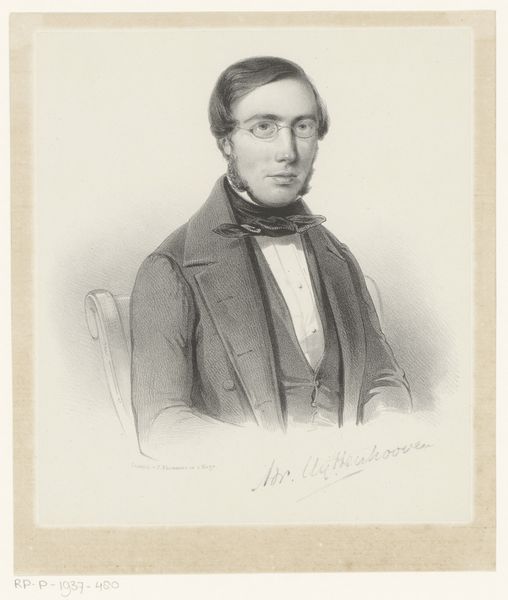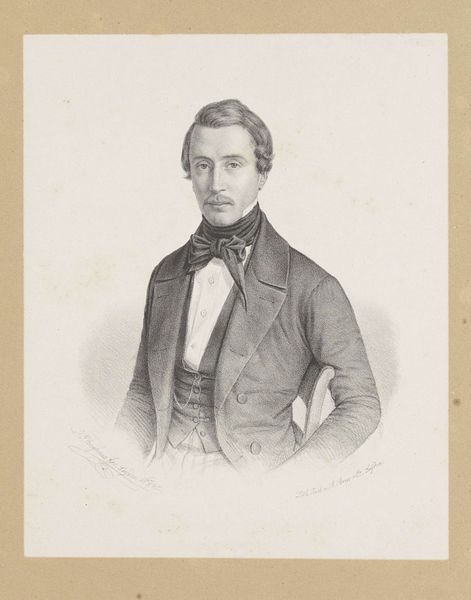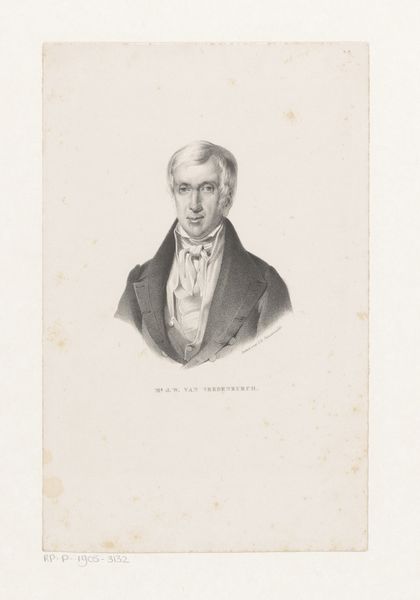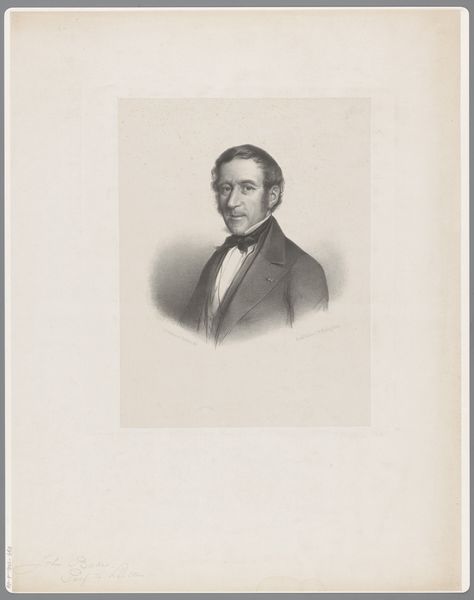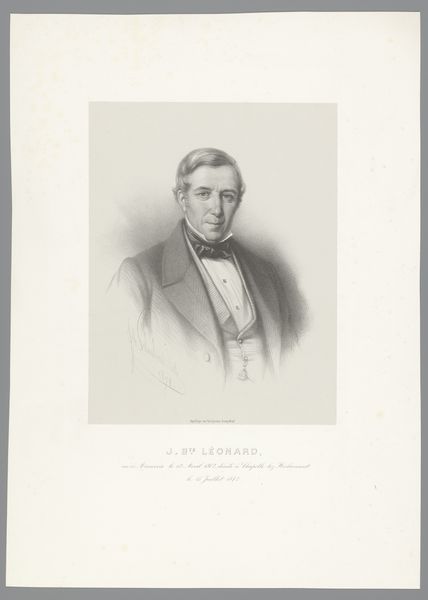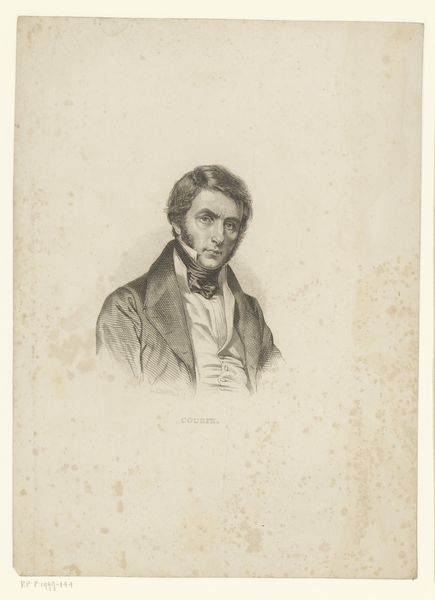
print, engraving
#
portrait
#
16_19th-century
#
neoclassicism
# print
#
caricature
#
portrait reference
#
line
#
portrait drawing
#
academic-art
#
engraving
#
realism
Dimensions: height 482 mm, width 371 mm
Copyright: Rijks Museum: Open Domain
This is a portrait of Gerardus Johannis Mulder by Franciscus Bernardus Waanders, made using lithography. Lithography is a printmaking technique using a flat stone or metal plate on which the image areas are worked using a greasy substance, so that the ink will adhere to them, while the non-image areas are made ink-repellent. The great appeal of lithography in the 19th century was that it allowed relatively quick reproduction of images. Unlike etching or engraving, which involve laborious cutting of lines, lithography allowed for a more fluid, drawing-based approach. Consider how the artist uses the greasy crayon to build up tonal depth, creating a soft, almost photographic likeness. While seemingly straightforward, lithography demands skill and an understanding of the chemical reactions between grease, water, and ink. This portrait, therefore, is not just an image, but the product of a specific industrial process, one that democratized image production and made art more accessible to a wider audience. It reminds us that even seemingly simple images carry a complex history of labor, technology, and social change.
Comments
No comments
Be the first to comment and join the conversation on the ultimate creative platform.
